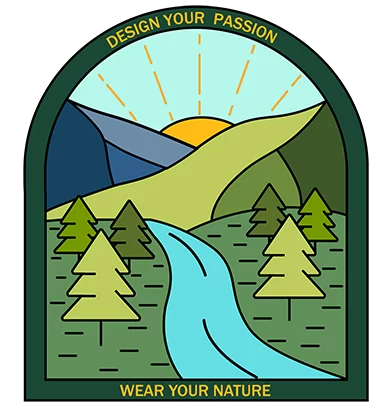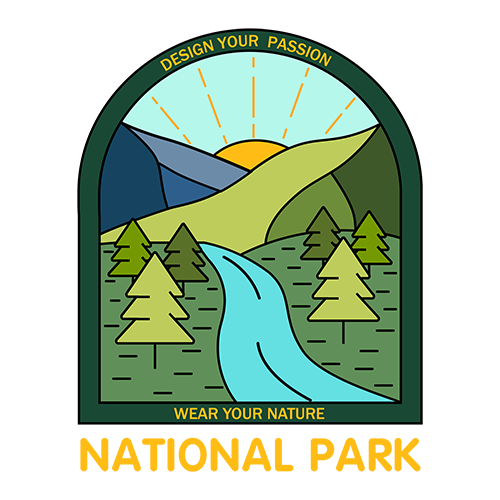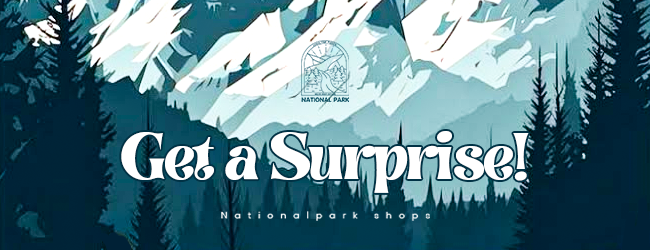Indiana Dunes National Park
The Indiana Dunes National Park is a natural wonder that has captivated visitors for decades. Nestled along the southern shore of Lake Michigan, this 15,000-acre park boasts a diverse landscape of towering sand dunes, pristine beaches, lush forests, and serene wetlands. From its rich history to its stunning natural beauty, the Indiana Dunes National Park offers a truly unique and unforgettable experience for all who visit.
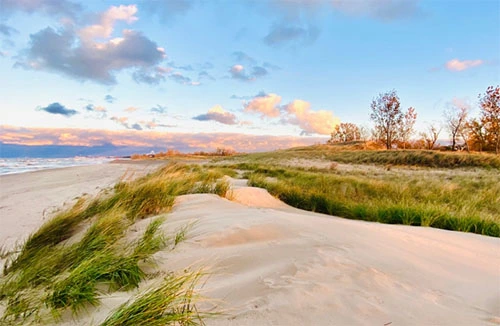
Indiana Dunes National Park Overview
Visitors to Indiana Dunes National Park can explore 15,000 acres of natural terrain, including hiking through forests. The park is a valuable collection of various natural resources situated in an urban area. It consists of dunes, oak savannas, swamps, bogs, marshes, prairies, rivers, and forests, with 15 miles of Lake Michigan shoreline from Gary to Michigan City. The landscape features sand dunes rising up to nearly 200 feet, formed over thousands of years since the last glacier retreated.
With a diverse plant life of over 1,100 species and ferns, including bog plants, prairie grasses, white pines, and rare algal species, the park is a haven for nature enthusiasts. Birdwatchers also flock to the park, as it is home to more than 350 bird species.

Things to do in Indiana Dunes National Park
The Indiana Dunes National Park offers a wide range of outdoor recreational activities and experiences for visitors to enjoy.
Beach-going & Swimming
The southern shore of Lake Michigan offers fifteen miles of sandy beach with a variety of recreational activities. Whether you want to take a summer sunset walk or admire the beauty of Lake Michigan’s shelf ice, the beach can be enjoyed all year round.
There are multiple beach parking lots at Indiana Dunes National Park, all equipped with drinking water and restrooms. Most beaches and parking lots are open daily from 6:00 am to 11:00 pm, except for West Beach and Porter Beach, which close at 9:00 pm.
West Beach provides locker rooms, showers, and lifeguards from Memorial Day weekend through Labor Day weekend. Lifeguards are on duty from 10:00 am to 6:00 pm, including equipment setup and takedown.
Entrance to Indiana Dunes National Park requires a fee. Passes must be purchased to access the park and the mentioned locations. During summer weekends and holidays, beach parking lots fill up quickly. Lots like Lake View, Dunbar, Kemil, Porter, and Portage Lakefront and Riverwalk can fill up as early as mid-morning. It is advisable to arrive early or wait until late afternoon when spots become available as visitors leave. West Beach’s lot can accommodate nearly 642 cars and rarely fills up except on holiday weekends.
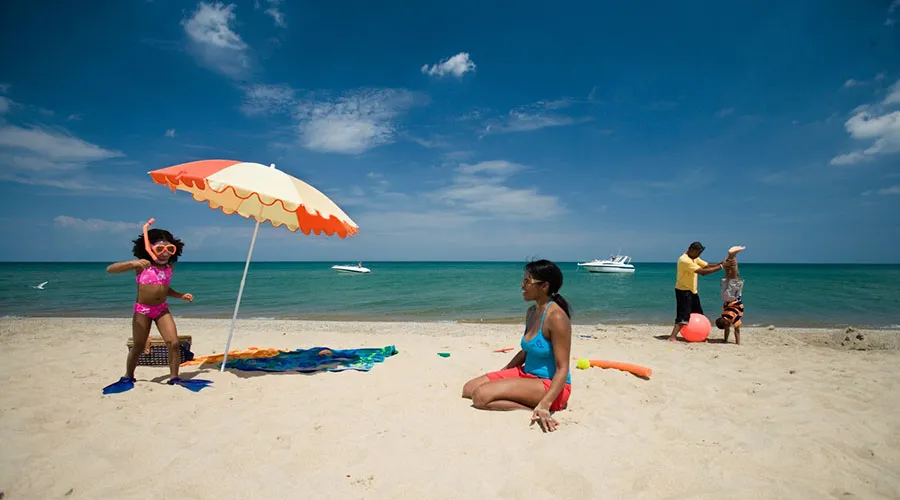
Biking
Explore more than just sand dunes while biking on a connected trail system that covers 37 miles throughout the national park. The trails in Indiana Dunes National Park offer a diverse range of landscapes and historical sites to discover. With trails of different lengths, you can easily find one that suits your preferences, whether you prefer a short leisurely ride or a challenging full-day adventure. Most trails are open year-round, providing a unique experience with each changing season.
E-bikes are permitted in areas where traditional bicycles are allowed within Indiana Dunes National Park. However, they are not allowed in areas where traditional bicycles are prohibited. It is important to note that using the electric motor to propel an e-bike without pedaling is only allowed in areas where public motor vehicle use is permitted.
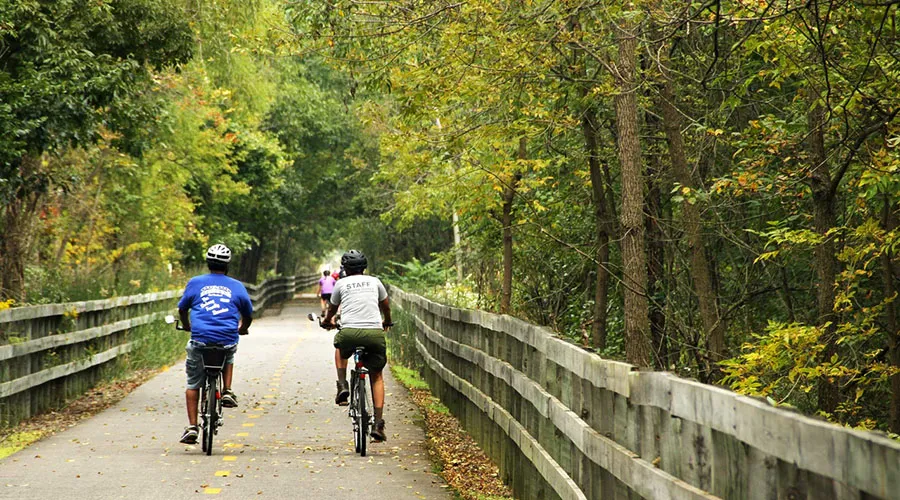
Fishing & Boating
Fishing is permitted according to federal, state, and local regulations. An Indiana Fishing License and stamp are required for trout and salmon fishing.
For boats, boaters should maintain a distance of 500 feet from designated swimming areas, even when docking. Boat launches are available in nearby communities, but personal watercraft are not allowed.
Lake Michigan is popular for sailing and power boating, although there are no marinas or rentals within the national park. Services can be found in Porter, Lake, and LaPorte counties through commercial and city facilities.
In addition, Kayaking has also become increasingly popular on Lake Michigan and local waterways like the Little Calumet River and Burns Waterway. Explore the Little Calumet River Water Trail East Branch for a new adventure. Hand-carried, nonmotorized boats can be launched from any Indiana Dunes National Park beach except West Beach’s lifeguarded area from Memorial Day weekend to Labor Day weekend. Be aware that Lake Michigan’s water conditions can change rapidly, so always check the weather forecast and wear a certified personal flotation device.

Hiking
Explore more than just sand dunes while walking through 15 different trail systems that span over 50 miles of paths. The hiking trails in Indiana Dunes National Park offer a diverse range of landscapes and historical sites to discover. With trails of different lengths and levels of difficulty, you can easily find one that suits your preferences, whether you prefer a short leisurely walk or a challenging full-day hike.
Most trails are accessible year-round, providing a unique experience with each changing season. You can pick up paper trail maps at the Indiana Dunes Visitor Center, the Paul H Douglas Center for Environmental Education, and at the beginning of each trail.
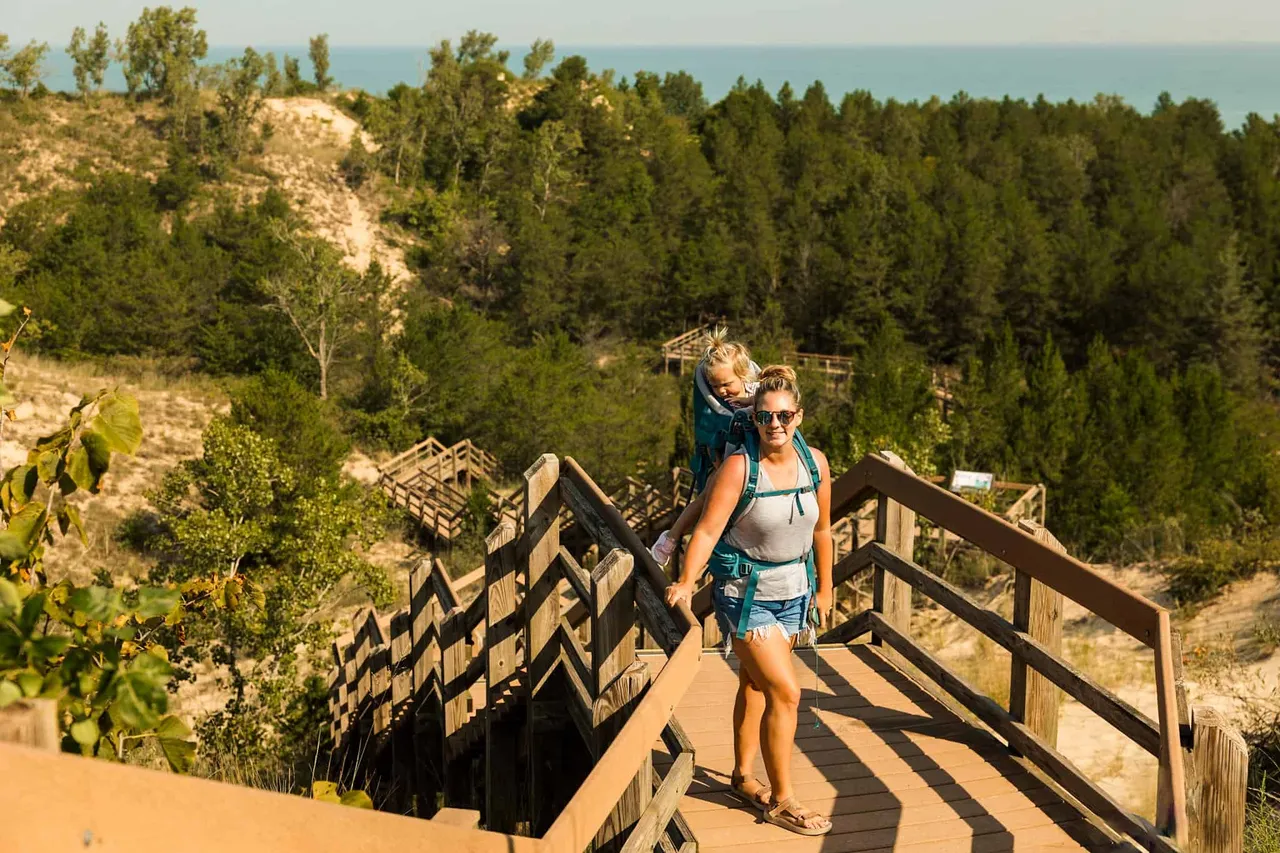
Geocaching
Geocaching is an outdoor treasure-hunting game where players, known as geocachers, use their smartphones or GPS devices to find hidden containers called geocaches.
To start your adventure, sign up for a free geocaching account at www.geocaching.com, enter your search location, select a geocache from the search results, and click navigate. Different icons represent various types of geocaches, with difficulty indicating how hard it is to find the object and terrain showing how challenging it is to reach.
Use your GPS-enabled device to locate the geocache, being mindful not to damage plants. Sign the logbook, return the geocache, mark it as found in the app, and share your experience online. Indiana Dunes National Park offers 4 unique types of geocaches.
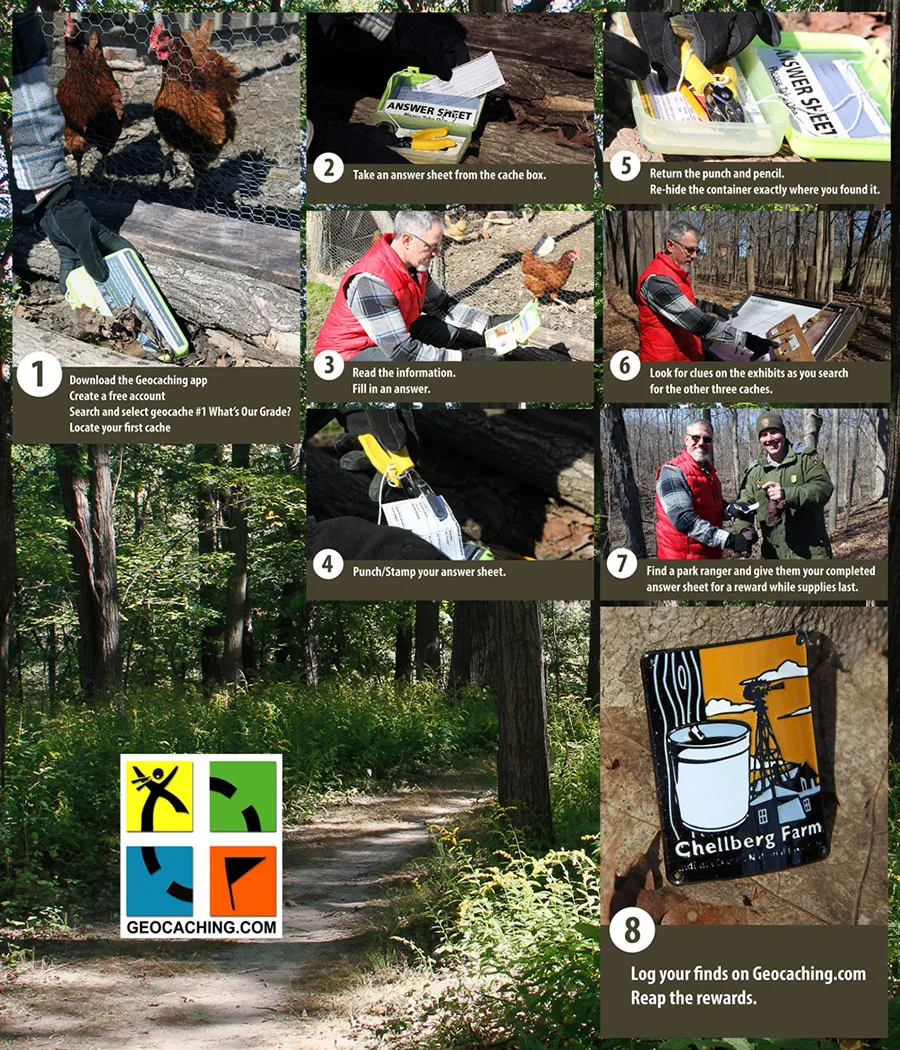
Visiting Historical Sites
Indiana Dunes National Park not only protects natural landscapes but also preserves a rich history with over 60 historic structures. Among them is the Bailly Homestead, designated as a National Historic Landmark. Other significant sites include Camp Good Fellow, the Chellberg Farm, and five houses from the 1933 Chicago Worlds Fair.
The houses from the World’s Fair showcased innovative building materials, modern appliances, and construction techniques in line with the fair’s Century of Progress theme. These homes, such as the House of Tomorrow and Florida Tropical, were later relocated to Northwest Indiana to promote Beverly Shores. In the early 1970s, they became part of the national lakeshore.
Through a partnership with Indiana Landmarks, four out of the five homes have been restored using private funds.
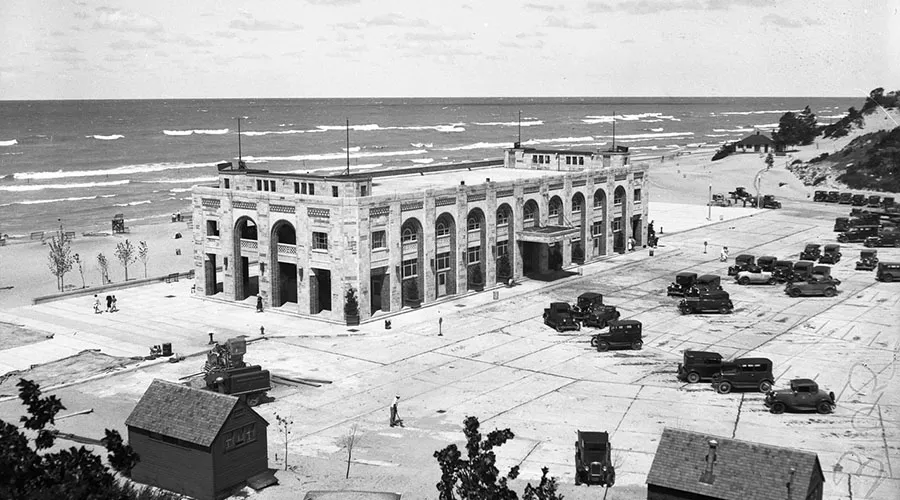
Stargazing
The National Park Service (NPS) protects nighttime views and environments as important park features. Preserving the night sky enhances qualities like solitude, wilderness character, and cultural/historical preservation that are crucial for animals, visitors, and parks. The NPS recognizes a naturally dark night sky as essential for supporting both natural and cultural resources.
Despite being close to urban areas, Indiana Dunes National Park offers surprisingly dark skies due to Lake Michigan’s large presence to the north, which helps keep the sky darker near the lakeshore compared to surrounding regions. Visitors can enjoy the best views of stars and the Milky Way on clear, moonless nights. While stars can be seen along the shore, light pollution from nearby communities does affect the night skies at Indiana Dunes, making some areas of the park darker than others.
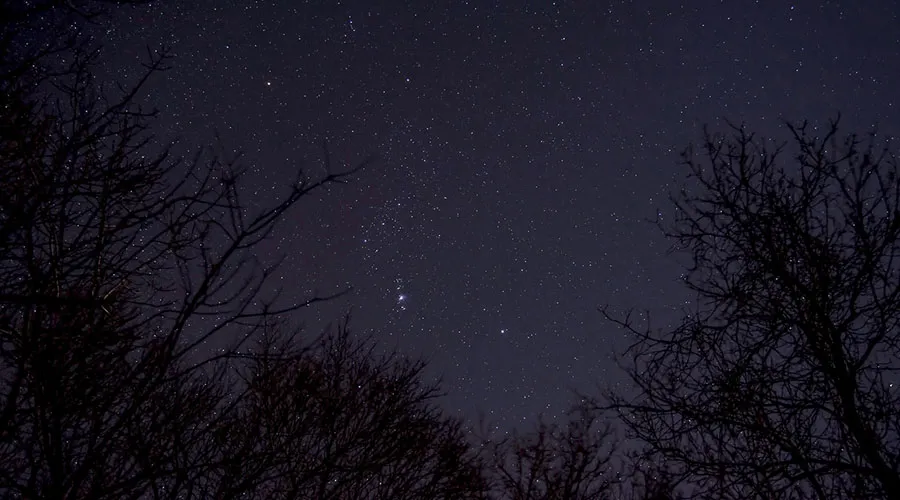
Winter Activities
Every season, the natural beauty of Indiana Dunes undergoes a stunning transformation Winter allows visitors to explore the park in unique ways, with snow covering the landscape and ice formations along the beach. The days are shorter, the atmosphere is more relaxed, and there are fewer crowds during the winter months.
With most of the plants in dormancy, the terrain is more visible in this almost bare landscape. West Beach, Kemil Beach, Dunbar Beach, and Lake View are ideal spots to admire the winter scenery.
Embarking on a hike is an excellent way to enjoy the winter landscapes at Indiana Dunes. Most trails are open for winter hiking, except for the Pinhook Bog Trail. The Upland Trail remains accessible. Trails like the Paul H Douglas Trail, Cowles Bog Trail, and West Beach Trails offer various difficulty levels for winter hiking experiences. Choose a trail that suits your skill level.
Cross-country skiing and snowshoeing are popular activities in winter when there is enough snow accumulation (at least 4-6 inches recommended). Free snowshoe rentals are available at the Paul H Douglas Center for Environmental Education for use on the Paul H Douglas Trail, weather permitting. Visitors must bring their own snowshoes or cross-country skis for these activities at other locations within the park.
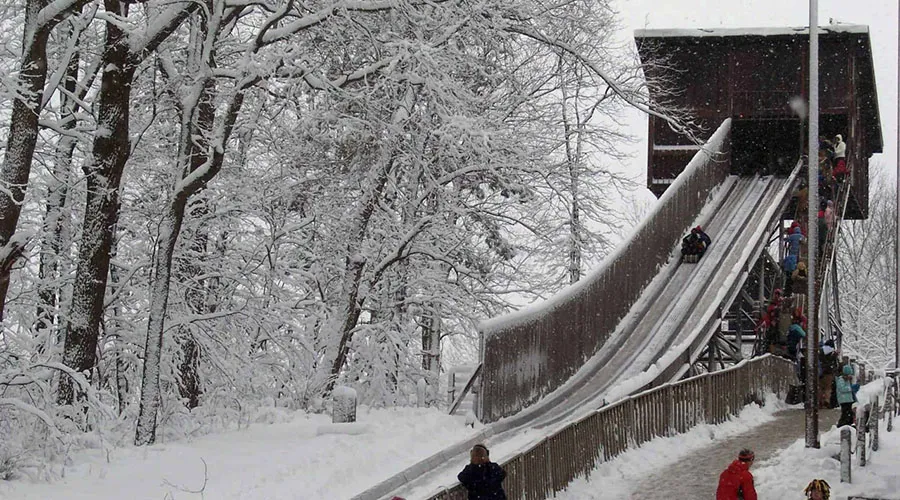
Places to stay in Indiana Dunes National Park
The Indiana Dunes National Park offers a variety of accommodation options, from camping to hotels and resorts, to ensure that visitors can find the perfect place to stay during their visit.
Camping
The Indiana Dunes National Park has several campgrounds that offer a range of camping experiences, from primitive sites to RV hookups. Unwind, have fun, and connect with nature by selecting from 3 camping spots that can be reserved in the park.
Dunewood Campground: The campground has two sections with a total of 66 campsites – 53 regular drive-in sites and 13 walk-in sites. Four of the sites are accessible for wheelchairs, specifically numbers 15, 30, 41, and 55. Each section has updated bathrooms and showers with both hot and cold water. Some sites have restrictions on the length of recreational vehicles allowed.
Dunbar Group Site: The Dunbar Group Site can accommodate up to 30 individuals and is situated within 500 feet of the beach. It offers views of the Great Marsh and Lake Michigan. Parking and restroom facilities are available at the Dunbar Beach parking lot, which is just 400 feet away from the site.
Central Avenue Walk-in Sites: The Central Beach Walk-In Sites consist of 5 locations, and you will need to walk a distance to reach your campsite. A basic portable toilet is available near the Central Beach parking lot throughout the season. There is no potable water on site, so it is necessary to bring your own supply.
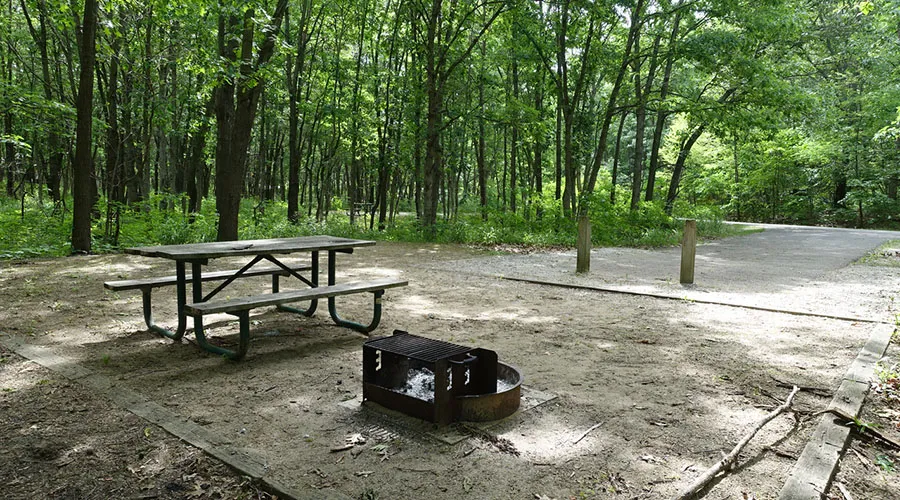
Hotel and Resort
For those who prefer a more traditional accommodation experience, the Indiana Dunes National Park is surrounded by a variety of hotels, motels, and resorts.
Best Western Indian Oak (2-star)
Situated in Chesterton, IN, the Best Western Indian Oak offers a tranquil and cozy accommodation for travelers. Guests can enjoy complimentary internet access to stay connected and browse the web either from their room or the business center. Emphasizing cleanliness and affordability, Best Western Indian Oak guarantees a relaxing and efficient stay.
- Address: 558 Indian Boundary Rd, Chesterton, IN 46304
- Price Range: From $111 – $157/night depending on the season and demand
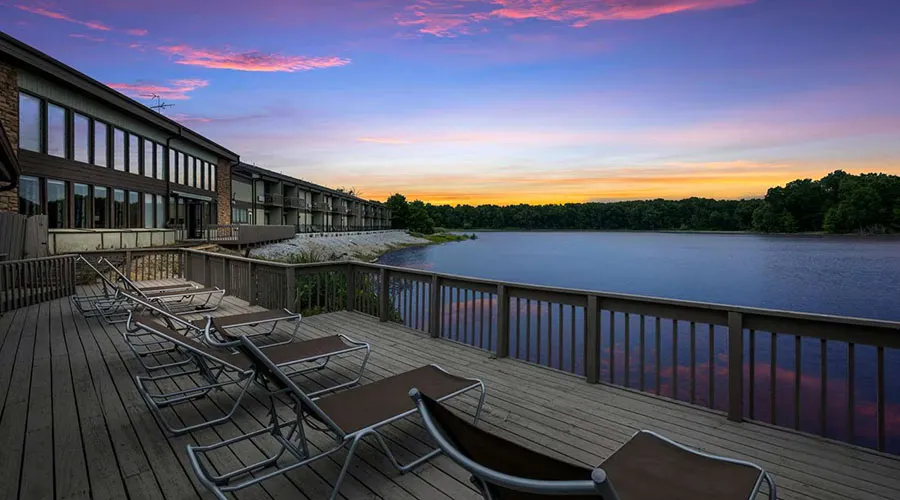
Country Inn & Suites By Carlson Portage (3-star)
Created for family getaways and successful work travels, the Country Inn & Suites by Radisson in Portage, IN offers a great location near I94 and just under two miles from Lake Michigan. Guests can shop for gear at Bass Pro Shops nearby, then head to the fishing pier at Portage Lakefront and Riverwalk. After enjoying a day outdoors, unwind in the hotel’s hot tub while your children have fun on the waterslide in the kids’ pool.
- Address: 1630 Olmstead Dr, Portage, IN 46368-1696
- Price Range: From $160 – $200/night depending on the season and demand
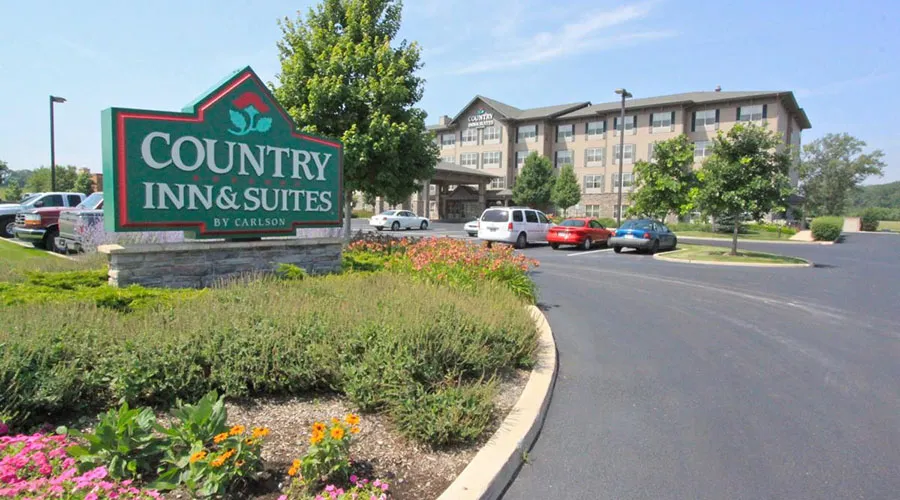
Hilton Garden Inn Chesterton (4-star)
The Hilton Garden Inn Chesterton Hotel in Indiana is conveniently situated near Indiana Interstate 8090 exit 31, providing easy access to Valparaiso, Portage, Michigan City, Westville, South Bend, and Gary, IN. The hotel offers 120 guest rooms and suites, each equipped with complimentary wired and wireless Internet access, secure PrinterOn printing to the 24-hour Business Center, a spacious work desk, ergonomic chair, and desk-level outlets.
Amenities at the Hilton Garden Inn Chesterton hotel include SouthShore Drift restaurant serving breakfast, dinner, and evening to-go options, a 24-hour Pavilion Pantry convenience store, free self-parking, a complimentary 24-hour Business Center, wired and wireless Internet in the lobby and restaurant, and an indoor pool.
- Address: 501 Gateway Boulevard, Chesterton, IN 46304
- Price Range: From $146 – $205/night depending on the season and demand
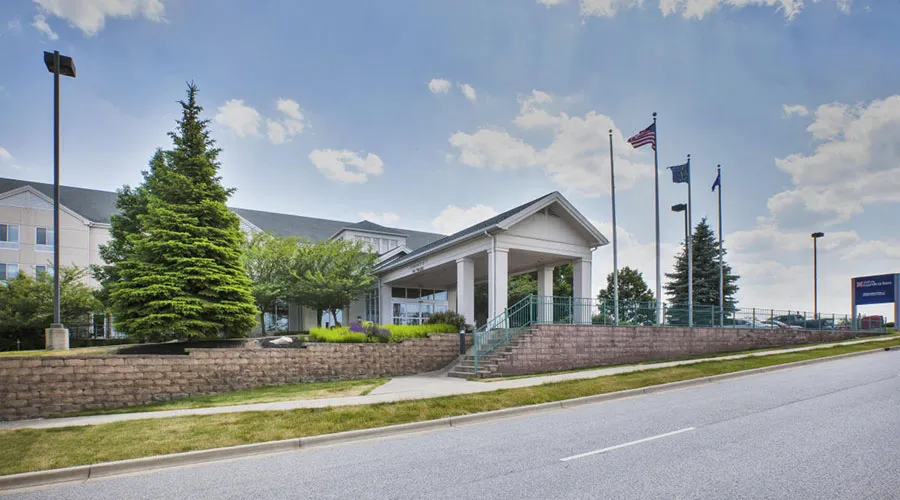
Dining
When you explore Indiana Dunes, you will come across numerous dining options nearby.
Holly’s Restaurant and Pub
Since 1974, Hollys Restaurant and Pub has been a beloved dining destination for individuals and families across Northwest Indiana. This establishment offers a welcoming atmosphere where patrons can enjoy delicious American cuisine, refreshing drinks, and complimentary popcorn. The family-friendly environment at Holly’s makes it a popular choice for gatherings with loved ones or casual meals with friends. With its longstanding reputation for great food and hospitality, it’s no wonder why Hollys Restaurant and Pub continues to be a go-to spot for many in the community.
- Address: 3705 Franklin St, Michigan City, IN 46360-7310
- Open time: 11:00 AM – 8:00 PM
- Prices range: $7 – $18

Octave Grill
The special quality of the food and drinks at Octave Grill comes from the main components used, such as grass-fed beef, locally brewed beer, and homemade ingredients. These elements are combined to offer guests a one-of-a-kind dining experience.
- Address: 137 S Calumet Rd, Chesterton, IN 46304-2433
- Open time: 3:00 PM – 8:00 PM
- Prices range: $8 – $14

Wagner’s Ribs
Wagners Ribs is a lively gathering spot where you can enjoy delicious ribs and other BBQ favorites while watching sports on TV. The casual atmosphere includes outdoor seating for a relaxed dining experience.
- Address: 361 Wagner Rd, Porter, IN 46304-1752
- Open time: 10:00 AM – 10:00 PM
- Prices range: $12 – $41
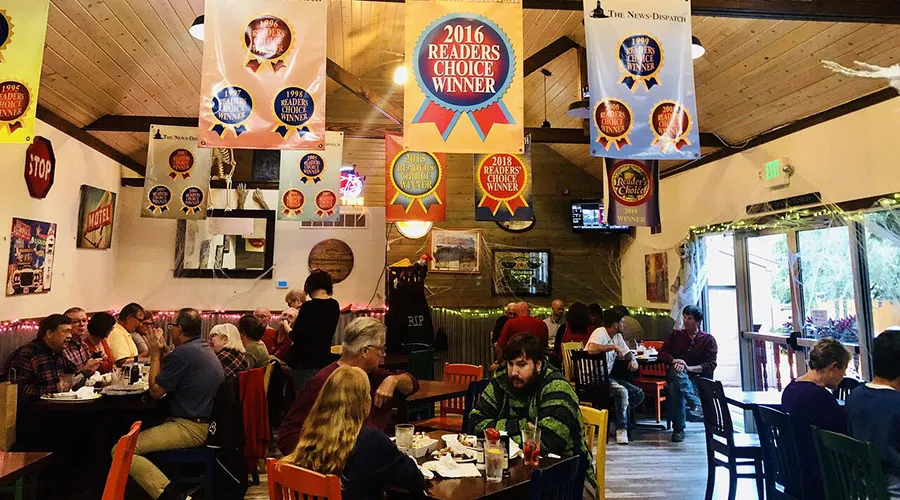
Planning Your Trip to Indiana Dunes National Park
Planning a trip to the Indiana Dunes National Park can be a rewarding and exciting experience, with plenty of opportunities to explore the park’s natural beauty and unique attractions.
Visiting Time
The best time to visit the Indiana Dunes National Park depends on your interests and preferences. Here are some general guidelines:
Spring (April-May): This is a great time to explore the park’s lush forests and witness the blooming of wildflowers.
Summer (June-August): The peak season for the park, with warm weather, beautiful beaches, and a variety of outdoor activities.
Fall (September-November): Enjoy the stunning fall foliage and fewer crowds in the park during this season.
Winter (December-March): The park takes on a serene, snow-covered beauty during the winter months, making it a great time for activities like cross-country skiing and snowshoeing.
Spring is a great time to explore the park's lush forests
Summer is the peak season for Indiana Dunes National Park
Fall has stunning foliage and fewer crowds in Indiana Dunes National Park
Indiana Dunes National Park takes on a serene, snow-covered beauty during the winter months
Transportation
The Indiana Dunes National Park is easily accessible by car, with several entry points and parking areas located throughout the park. Visitors can also use public transportation, with the South Shore Line commuter rail service providing access to the park from Chicago and other nearby cities.
For those looking to explore the park on foot or by bike, the park’s extensive trail system and scenic byways offer a great way to experience the natural beauty of the area.
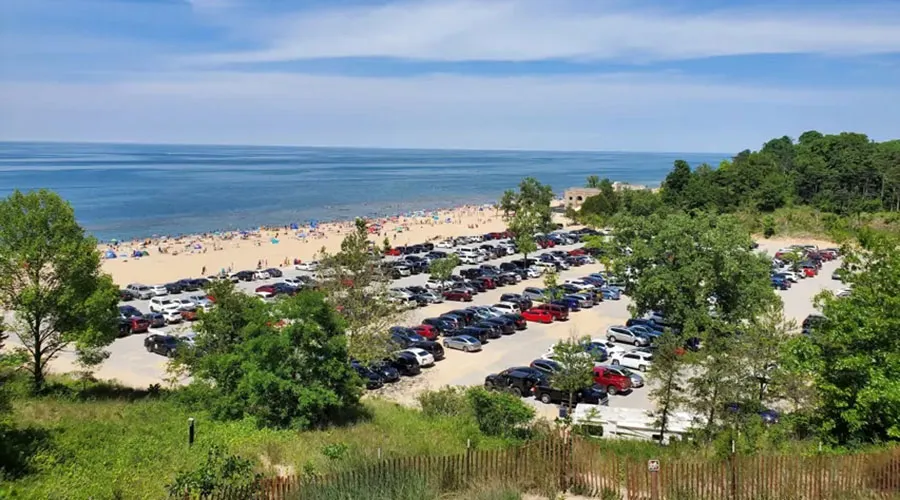
Conclusion
The Indiana Dunes National Park is a truly remarkable natural wonder, offering a diverse array of outdoor recreational activities, breathtaking landscapes, and a rich cultural and historical heritage. Whether you’re a nature lover, an adventure seeker, or simply someone who appreciates the beauty of the great outdoors, the Indiana Dunes National Park is a destination that is sure to leave a lasting impression.
Indiana Dunes National Park Photos
Q&A for Indiana Dunes National Park
The Indiana Dunes National Park has a long and fascinating history, dating back to the early 20th century when a group of conservationists began advocating for the protection of the region’s natural resources. The Indiana Dunes National Lakeshore was established in 1966, and in 2019, it was redesignated as the Indiana Dunes National Park, making it the first national park in the state of Indiana.
Some of the must-see attractions in the Indiana Dunes National Park include the towering sand dunes, the pristine beaches along Lake Michigan, the lush forests and wetlands, and the park’s rich historical and cultural sites, such as the Century of Progress Architectural District and Chellberg Farm.
The Indiana Dunes National Park offers a wide range of outdoor activities, including beach-going and swimming, biking, fishing and boating, hiking, geocaching, stargazing, and winter sports like cross-country skiing and snowshoeing.
The park offers a variety of accommodation options, including camping at the Dunewood Campground, Pinhook Bog Campground, and Portage Lakefront and Riverwalk Campground, as well as hotels, motels, and resorts in the surrounding area.
The best time to visit the Indiana Dunes National Park depends on your interests and preferences. Spring is a great time to see the blooming of wildflowers, summer is the peak season for outdoor activities, fall offers stunning fall foliage, and winter is a serene time to enjoy activities like cross-country skiing and snowshoeing.
